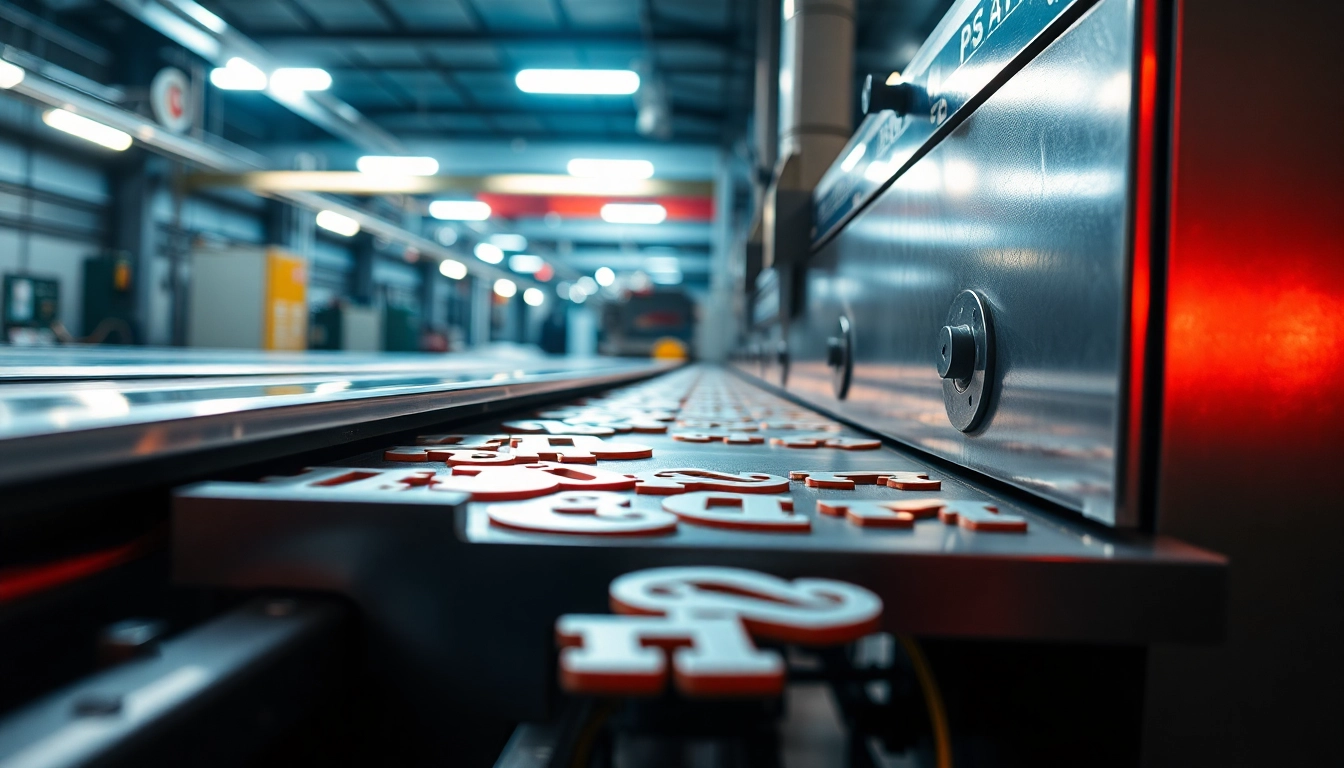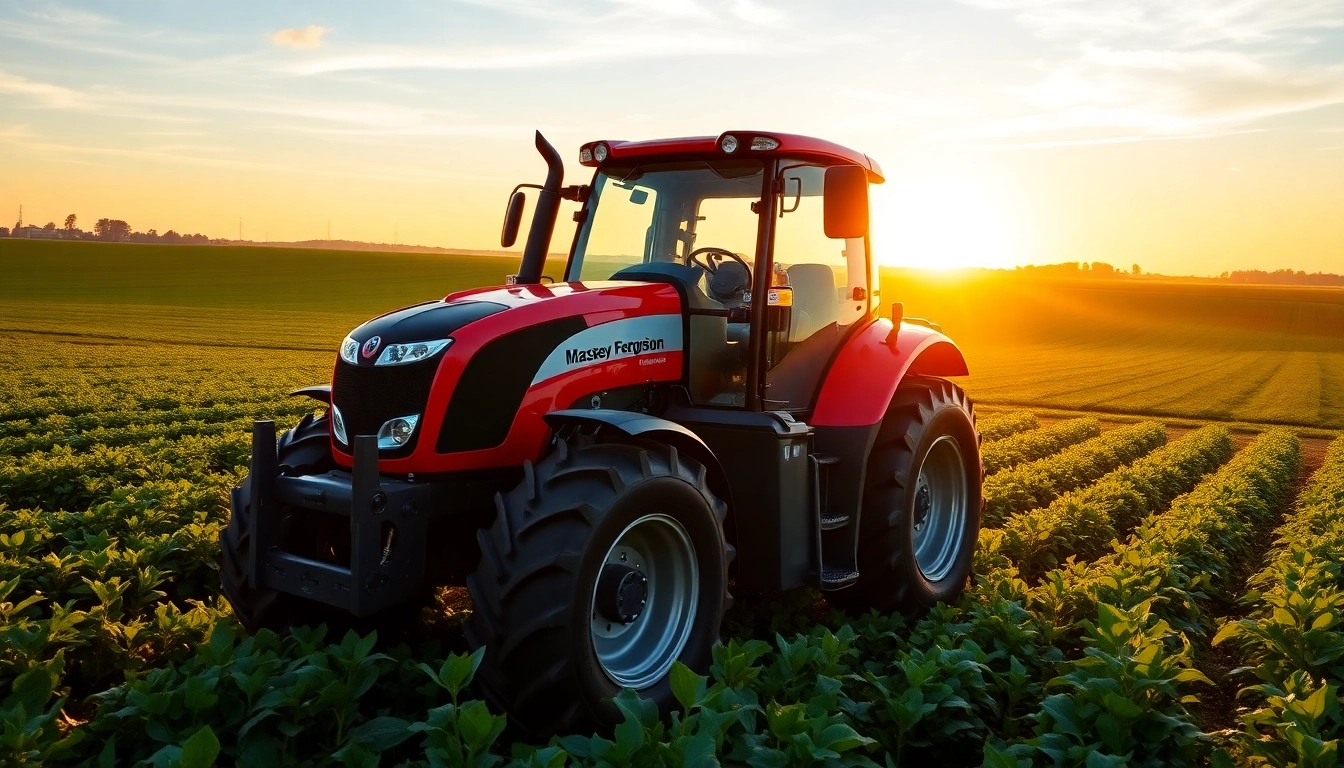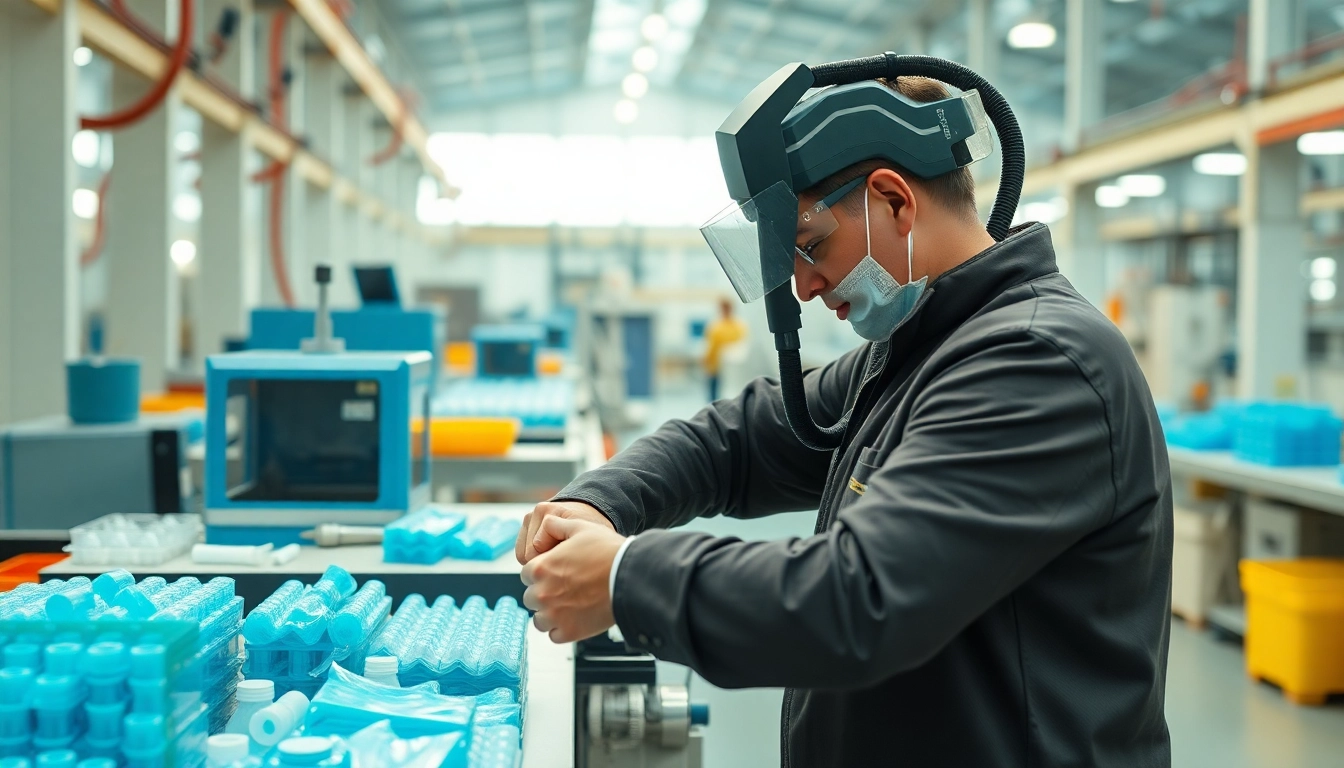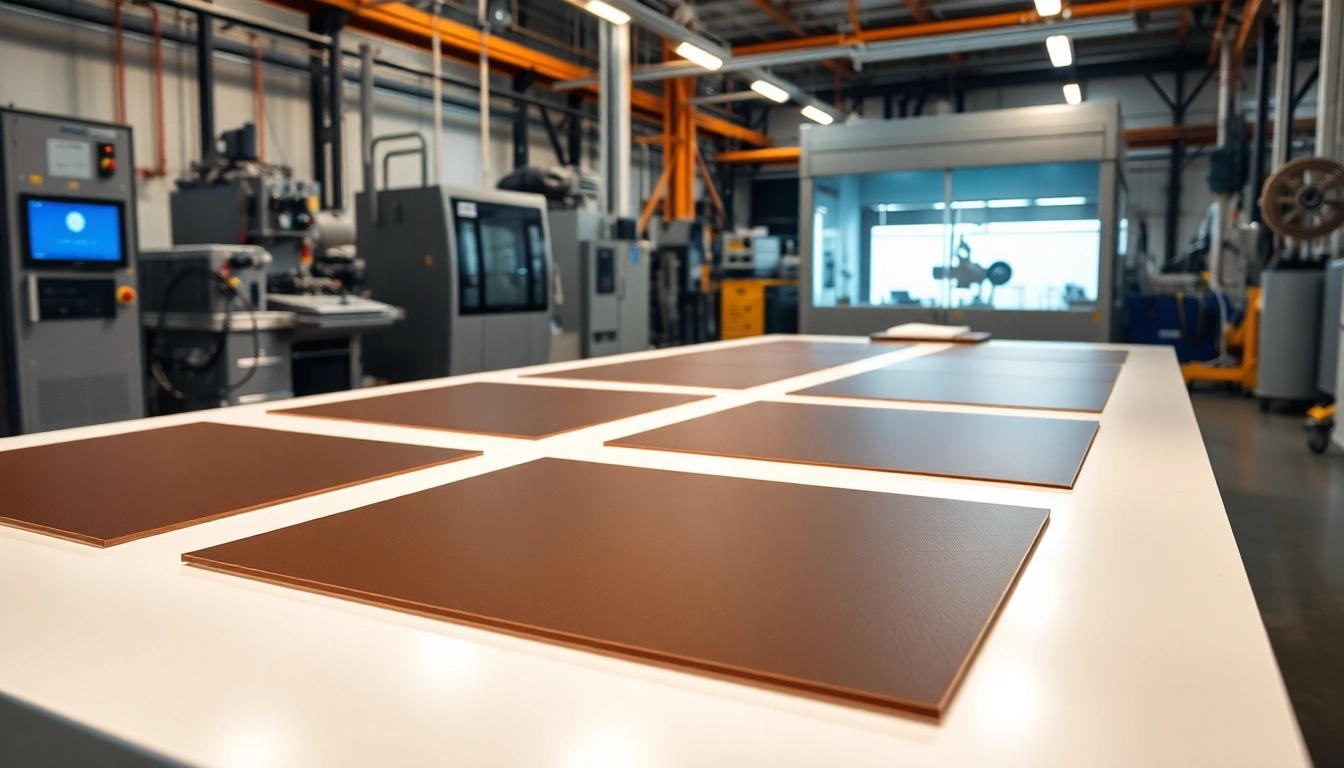Introduction to Precision Die Cutting
In the realm of manufacturing, precision die cutting has emerged as a vital technique known for its accuracy and efficiency in producing complex shapes from various materials. This method allows businesses to scale their production while maintaining consistent quality, making it a preferred choice across diverse industries, including automotive, medical, packaging, and electronics. Below, we delve into the intricacies of precision die cutting, providing an in-depth understanding of its significance, applications, methodologies, and the evolving technologies reshaping this field.
What is Precision Die Cutting?
Precision die cutting is a manufacturing process that utilizes sharp, specialized tools known as dies to cut materials into specific shapes and sizes. This technique can be performed on various substrates, including paper, plastics, metals, and rubbers, transforming them into components that meet exact specifications. Unlike traditional cutting methods, which may yield irregular shapes, precision die cutting ensures uniformity and precision across all cut items, significantly enhancing production efficiency.
Importance of Precision in Manufacturing
The significance of precision in manufacturing cannot be overstated. Accurate dimensions and consistent quality directly impact product functionality, assembly, and overall performance. Industries where high precision is paramount, such as aerospace and medical device manufacturing, require stringent tolerances to ensure safety and reliability. Furthermore, this precision lowers material waste, reduces costs, and enhances overall production speed, driving profitability and competitive advantage.
Applications of Precision Die Cutting
Precision die cutting serves a multitude of applications across different sectors. Here are some key examples:
- Automotive Industry: Used to cut parts like gaskets, insulation, and protective layers that require exact fit and durability.
- Electronics: Provides crucial components like insulation pads, circuit boards, and connectors made from various materials that require consistent precision.
- Medical Field: Assists in creating components for sterile packaging, filters, and gaskets used in medical instruments, where hygiene and exactitude are critical.
- Packaging: Offers custom shapes for boxes, labels, and packaging inserts that not only improve function but also enhance brand presentation.
Understanding Different Die Cutting Methods
In the landscape of precision die cutting, several methods exist, each with its unique applications, advantages, and limitations. Understanding these methods is crucial for manufacturers when selecting the right technology for their specific requirements.
Flatbed vs. Rotary Die Cutting
The two primary methods of die cutting are flatbed and rotary die cutting, each serving different production needs:
- Flatbed Die Cutting: Involves a flat die on which the material is placed, and a hydraulic press uses significant force to cut through the material. This method is especially useful for thicker substrates and smaller runs due to its flexibility in die creation.
- Rotary Die Cutting: Involves a cylindrical die that rotates as it cuts, allowing for high-speed production and improved efficiency. This method is particularly effective for long productions, such as sticker or label manufacturing, providing a clean cut and minimal waste.
When to Use Each Method
Choosing between flatbed and rotary die cutting largely depends on the specific requirements of the project:
- If the project demands intricate designs with lower volumes, flatbed die cutting is often the ideal choice due to its adaptability and capability to handle varying material thicknesses.
- For large-scale production runs where speed and efficiency are paramount, rotary die cutting is more suitable, especially when manufacturing simpler shapes that can benefit from the continuous nature of the process.
Comparative Advantages and Disadvantages
Both methods present unique advantages and challenges:
- Flatbed Die Cutting:
- Advantages: Versatile for various materials and thicknesses, allows for intricate designs.
- Disadvantages: Typically slower than rotary and can involve higher setup costs for smaller runs.
- Rotary Die Cutting:
- Advantages: High-speed production, lower operational costs for larger volumes, and generally more efficient use of materials.
- Disadvantages: Limited flexibility in design complexity and requires longer lead times for die creation.
Materials Suitable for Precision Die Cutting
Another critical aspect of precision die cutting is the selection of materials. Understanding the properties and characteristics of various substrates can greatly influence the success of the die-cutting process.
Common Materials Used
Manufacturers typically use the following materials in precision die cutting:
- Paper and Cardboard: Widely used for packaging and printing applications, offering flexibility combined with structural integrity.
- Plastics: Including polyethylene, polypropylene, and vinyl, these materials are valued for their durability and versatility in multiple applications.
- Foams: Commonly used in electronics for cushioning or insulation, providing a good balance between cushioning and structural support.
- Metals: Such as aluminum or stainless steel, utilized in high-precision applications where durability and resistance to corrosion are required.
Specialty Materials and Their Applications
Beyond common materials, various specialty materials have emerged that cater to specific industry needs:
- Silicone: Gaining popularity in medical and automotive applications, silicone can withstand extreme temperatures and is biocompatible, making it ideal for seals and gaskets.
- Adhesive-Coated Materials: Often used in packaging and labeling, these materials can be die cut to specific shapes while maintaining their stickiness for easy application.
- Composite Materials: Combining multiple substrates can yield advantages, such as enhanced performance characteristics, while precision die cutting ensures precise and clean cuts through layers.
Challenges with Material Selection
Despite the range of materials available, manufacturers often face challenges in selecting the most appropriate substrate for their projects:
- Material Thickness: Different die cutting methods can accommodate various thickness levels, which can complicate material selection.
- Material Compatibility: Some materials can wear down the die faster than others, impacting production longevity and costs.
- Environmental Factors: In industries like automotive and aerospace, ensuring materials can withstand environmental stressors is crucial for product longevity.
Best Practices for Precision Die Cutting Operations
To optimize the die-cutting process, several best practices can help manufacturers achieve enhanced productivity and efficiency:
Maintaining Equipment for Optimal Performance
Regular maintenance of die-cutting machines is essential to prevent downtime and ensure continuous production. Key practices include:
- Routine Inspections: Regular checks of machine components can identify wear or damage before they lead to significant issues.
- Calibration: Ensuring machines are correctly calibrated can maximize accuracy and precision in the cutting process.
- Replacement of Worn Parts: Timely replacement of worn out dies, blades, and other components can maintain production quality and reduce scrap rates.
Quality Control Measures
Implementing rigorous quality control measures can significantly enhance the accuracy and reliability of die-cut parts:
- Dimensional Checks: Regular dimensional inspections ensure parts conform to specifications, helping to identify deviations early in the production cycle.
- Material Testing: Conducting tests on different materials can help determine their suitability for the intended application and anticipate performance issues.
- Statistical Process Control (SPC): Utilizing SPC techniques can help in continuously monitoring the production process and maintaining consistency.
Cost-effective Strategies for Production
Cost reduction without sacrificing quality is essential in manufacturing:
- Batch Production: Producing in batches can minimize setup times and costs while maximizing output.
- Material Optimization: Careful planning in the layout of die cuts can minimize waste and reduce material expenses.
- Investing in Technology: Upgrading to more advanced die-cutting technology can offer better precision, faster production rates, and reduced labor costs in the long run.
The Future of Precision Die Cutting Technology
As industries evolve, the technology behind precision die cutting continues to advance, bringing exciting changes to the manufacturing landscape.
Innovations in Die Cutting Techniques
Recent innovations have broadened the capabilities and applications of die cutting:
- Laser Die Cutting: This technique offers extreme accuracy and flexibility in design, allowing manufacturers to produce detailed cuts without the need for physical dies.
- CNC Technology: Computer Numerical Control (CNC) has automated many elements of the die cutting process, improving consistency, precision, and flexibility in design.
Impact of Automation on Precision Cutting
Automation is redefining the die-cutting landscape, affecting labor costs, efficiency, and production capabilities:
- Reduced Labor Costs: Automating repetitive tasks allows skilled labor to focus on more complex aspects of production.
- Increased Efficiency: Automated systems often operate at faster speeds, increasing overall production rates while maintaining accuracy.
- Improved Data Tracking: Automation allows for better monitoring of production metrics, leading to informed decision-making and enhanced operational efficiency.
Trends Shaping the Industry Landscape
Several trends are currently influencing the precision die cutting industry:
- Sustainability Initiatives: Pressure to reduce waste and improve sustainability is encouraging manufacturers to adopt eco-friendly materials and processes.
- Customization Demand: The rise in demand for customized products is pushing manufacturers to leverage die-cutting technology to produce unique designs for various applications.
- Global Competition: Increased competition is driving innovations, faster turnaround times, and improved customer service within the die-cutting sector.
Conclusion
Precision die cutting stands at the forefront of modern manufacturing, intricately weaving together technology, quality, and efficiency. By understanding the various die cutting methods, suitable materials, best practices, and emerging innovations, manufacturers can harness the full potential of this essential process. As industries continue to evolve, staying ahead of trends and technological advancements will be crucial for companies seeking to maintain a competitive edge with high-quality precision die-cut components.



